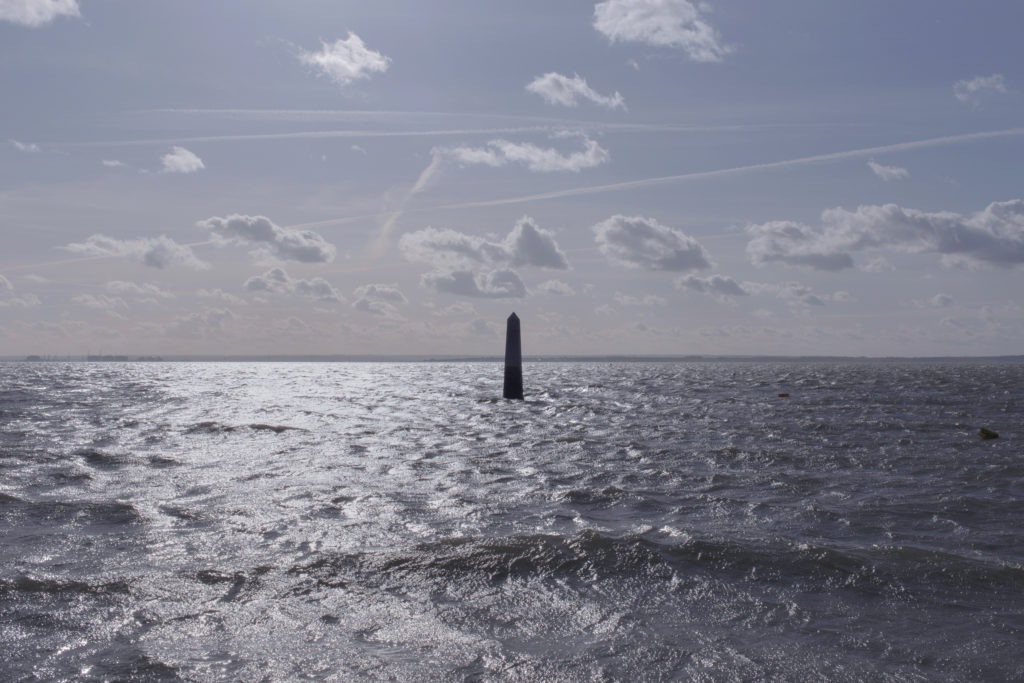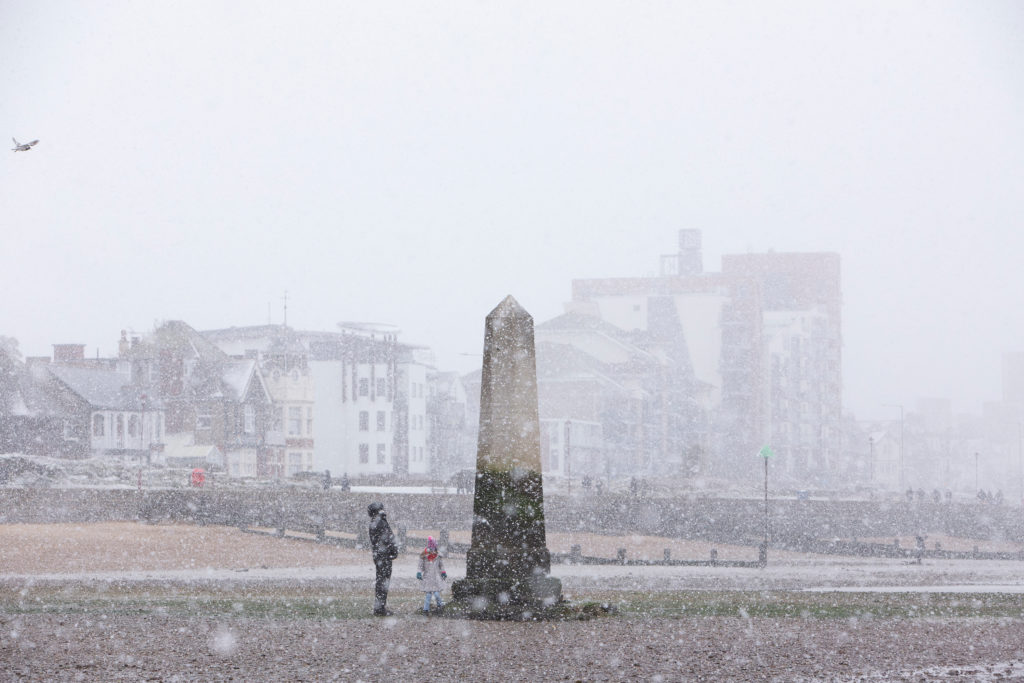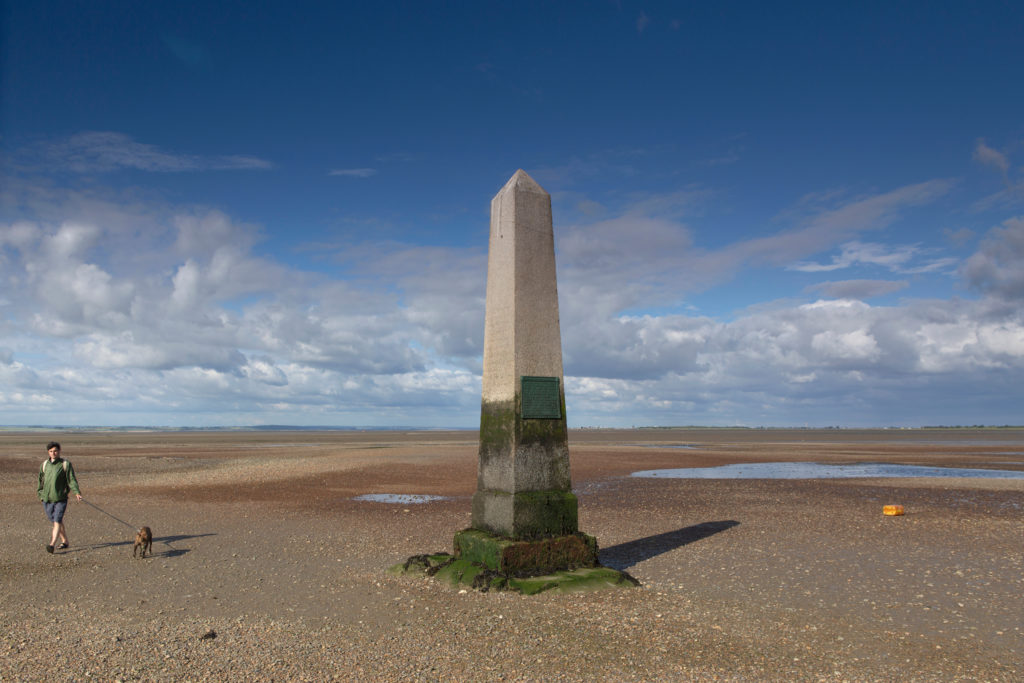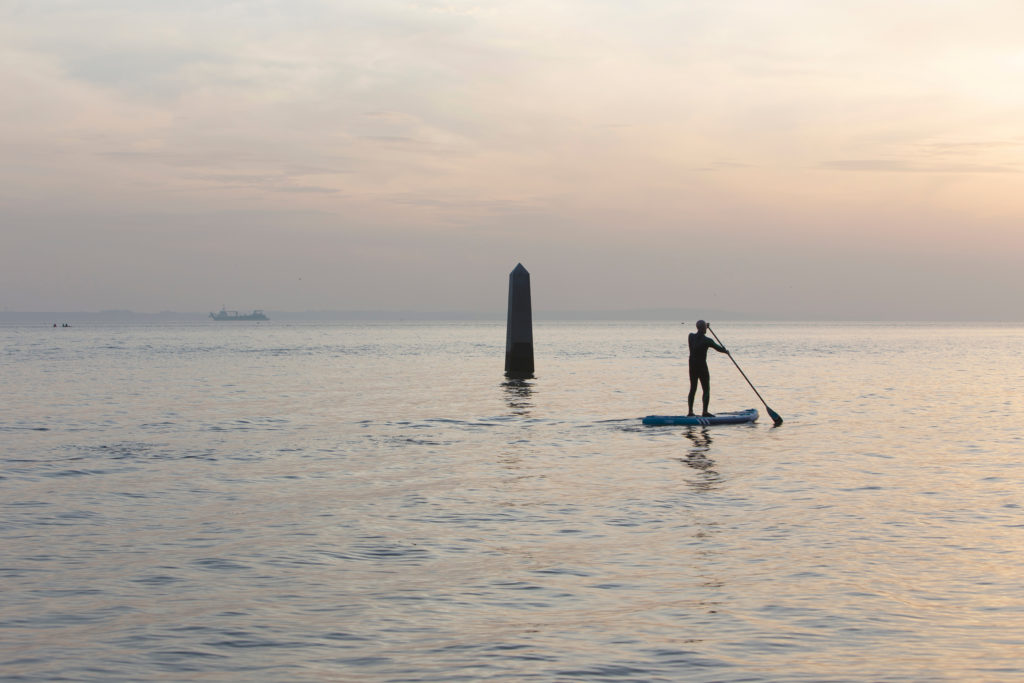An exhibition of Mark Massey‘s photos of the Crowstone — a local landmark which stands off the coast at Chalkwell, Essex — is to open next month as part of the Leigh Art Trail.

Writing on his website, Mark explains:
I have long been fascinated by the Crowstone, a well-known and solitary local landmark. I am documenting the stone, its interactivity with the public, and the changing tides, seasons and weather. With every visit I try to find a new way of seeing it — the only artistic limitation that I set myself was that the stone is always at the centre of the frame horizontally.
The stone has stood here for around 185 years, but a version of it has been in place since at least 1755. Here it challenges the daily movement of the tide, battered by the wind and waves — green algal growth on it showing the tidal range of the estuary.
An imaginary line exists between the obelisk and its sister stone on the opposite side, the London Stone at Yantlet Creek on the Isle of Grain, Kent. This line, just over four miles in length, marks the point where the River Thames officially becomes the sea, and was the eastern outer limit of the City of London’s jurisdiction. Where this line touched the shore, stone obelisks were set up to act as a physical marker.
I like the idea that the stone is a kind of sentinel, keeping guard over the estuary since long before any of us were around, and continuing to do so long after we’re gone. It must have stood witness to a lot over the years.



A series of ten posters from the project will be displayed in the Platform 1 waiting room at Leigh-on-Sea station from 3rd-11th September. You can see more photographs from The Crowstone here, and find out more about Leigh Art Trail here.